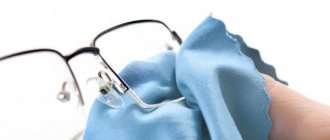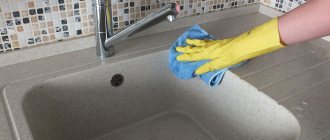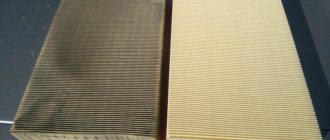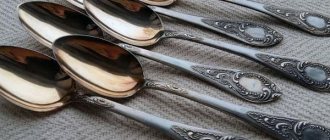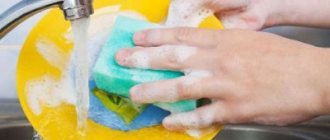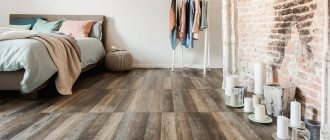Share
Tweet
+1
Pin
When choosing a material for finishing the surface of a wall, its condition plays a big role. It can be smooth or with defects. It can also be made of different materials. For example, from:
- concrete;
- bricks;
- drywall;
- metal;
- tree.
This must be taken into account in order to prepare the wall for painting. In addition, you need to immediately decide what the walls will be covered after the renovation, so that they please not only you, but also your guests. Decorative coatings come in the following types:
- plasters;
- Venetian plasters;
- decorative paints;
- flock coverings.
Everyone knows that plaster is a thick pasty mass that is used to decorate the surfaces of walls and ceilings. However, not everyone knows that it can be used not only as a basis for finishing materials, but also as the coating itself. Structural plaster is a heterogeneous granular mass to which various granules are added: small pebbles, wood fiber and others.
Is it possible to wash decorative plaster and how to care for it - let’s look at the essence
If the living room can be confidently called the heart of the house, then the kitchen should be confidently considered its soul. This is where household members bring their troubles and joys, solving global family problems over a cup of tea. The most intimate companies gather here and, often, get-togethers with friends last until the morning. And it is here that children first run, coming from school or college, to share their first disappointments or new achievements. Therefore, the appearance of the room, its decoration and decorative elements play a huge role. The kitchen should be cozy, neat and tidy, and all finishing materials should be selected with special care.
Features of care
Most of the decorative plasters that can be found on the market today are classified as moisture-resistant. This means that you can safely wash walls with such a coating. However, we must not forget that this must be done taking into account the type of plaster and in compliance with all the rules for caring for it. Otherwise, you risk getting a lot of unpleasant consequences, including the loss of a presentable appearance of the surface.
Cleaning methods may vary depending on what type of plaster mixture is applied to the walls, but in all cases the wet cleaning procedure does not require any special skills, tools or products. So, how to properly wash walls covered with decorative material?
Thin-layer decorative plaster
This type of wall covering includes plasters with the following effect:
- silks;
- corduroy;
- velvet, etc.
When washing such a coating, you should act as carefully as possible. You can only use a soft cloth soaked in plain water. If the contamination is strong enough, you can use a soft sponge or cloth soaked in a mild soap solution. When caring for thin-layer plaster, it is allowed to use a small amount of dishwashing detergent dissolved in water.
Textured
Among the advantages of this type of decorative mixtures is increased resistance to physical influences. Usually, in the process of forming such a coating, varnish or wax is applied as a finishing layer - these compounds have water-repellent properties, which significantly facilitates the care of textured decorative plaster.
You can use various brushes, cloths and sponges; you can add soap, dishwashing detergent, washing powder or glass cleaner to the water to clean dirt. A surface covered with textured plaster will not lose its decorative properties. This is an indispensable quality in the bathroom or kitchen.
Plaster with quartz filler
Speaking about the advantages of this type of wall coverings, experts note their resistance to mechanical stress and fairly high moisture resistance.
Caring for plaster that contains quartz filler is quite simple:
- if a large amount of dust accumulates, you can use a regular vacuum cleaner;
- if the contamination is significant, you should take a napkin soaked in warm water, to which you can add soap or a small amount of dishwashing detergent.
When caring for this type of surface, you can use a brush with soft bristles.
Venetian
The basis of this type of wall covering is marble flour. That is why at first it is necessary to protect Venetian plaster from moisture. It will take about 30 days for the surface to dry completely, and the wax coating that seals the plaster should be applied no sooner than a week after the last coat is applied.
Only when the wax has completely dried can the Venetian plaster be wiped with a damp rag or sponge. For severe stains, it is permissible to use soapy water. But what should be avoided are brushes, hard sponges, and abrasive powders.
Latex plastic
This type of decorative material allows you to obtain both surfaces with a slight gloss and walls that imitate the texture of marble or polished stone. Among the advantages is increased water resistance and resistance to various cleaning agents, and therefore this plaster can be cleaned with a damp cloth soaked in soap and water or a solution of washing powder.
What is decorative plaster and is it suitable for finishing a kitchen?
Decorative plaster is a mixture consisting of a binder to which various fillers are added. The most commonly used fillers are:
- Granite granules. They form a rough surface and are resistant to abrasion and mechanical stress.
- Marble chips. Has excellent adhesion to the binder base. However, marble is not very scratch resistant.
- Quartz particles. Resistant to mechanical stress. The polymer mixture contains medium adhesion.
Removing greasy yellow stains from kitchen walls
Stains are always easier to remove when they are fresh. But what to do if the stain appeared on the wall a long time ago and is difficult to remove?
Fat yellow stains that constantly appear on the walls and ceiling of the kitchen are annoying and difficult to remove. There is only one method to prevent them from appearing - frequent cleaning of the kitchen. After all, even the best hood is not able to protect walls and ceilings from them. Such stains appear from the slightest drops of fat that settle on surfaces (this could be a kitchen shelf, an indoor flower, a chandelier lampshade, a window sill). Grease also collects on the floor and on countertops, but these are the surfaces that are cleaned very often, so it seems that nasty, greasy yellow stains appear only on the walls and ceiling. If you wash the kitchen thoroughly every day, then stains may not appear. Or rather, they will not be so concentrated and harsh, because it is easier to remove them before they have time to “grow up.”
But if they are already there, then you need to wash them! There are several options. 1. Use vinegar. We dilute it with water in equal parts and rub it (or rather, we wet the surface). Each stain should absorb the acid. After which it swells, otherwise the greasy yellow spot becomes loose. In both cases, removing old stains is much easier. 2. Instead of vinegar, you can use lemon juice. The juice is applied to a sponge, after which the stains are generously moistened with it. 3. Use Domestos or chlorine (liquid, such as White or similar). The aggressive environment corrodes the fat, after which the stains become looser. After getting wet, namely after 5-10 minutes, you should wipe the stains with a soft sponge or rag. If grease stains are not completely removed, or they are difficult to remove, you will have to wipe them off with a steel wool. When stains are on the wallpaper (even detergent), you should not use such a hard sponge brush. This also applies to situations with surfaces that are easily damaged or abraded when exposed to abrasives (for example, decorative plaster).
Another option is to wipe them with a dry but soft cloth. In this case, you will have to put in some physical effort to remove the yellow spots, but it will be worth the result. True, you will most likely have to throw away the rag, but the walls will become perfectly clean. If the stains are not greasy and cannot be washed off with a regular detergent, then you should use the following method - use Domestos or a detergent with chlorine. But you should check whether the above products will not harm the surface, because such aggressive substances can cause the paint to fade. Therefore, you can first test the effect of the detergent on an invisible area of the same surface.
Wallpaper, painting or decorative plaster? Consumption of materials
Image from designsnext.com
Repair is a labor-intensive process in itself, and steps such as the choice of finishing materials make it much more complicated.
For example, the finishing design of the walls: what should it be? Maybe paintable wallpaper, which has already become a traditional solution? Or will you be puzzled by advanced technology, such as decorative plaster? Or maybe it’s better to approach the choice more simply - paint the walls, and that’s enough!
No matter how much we argue, your choice will be determined by two factors: the price of the issue and durability in order to postpone the next repair for as long as possible.
Features of different types of wall decoration
Paintable wallpaper. Open source image.
We are talking about paintable wallpaper - they are in mass demand, unlike their outdated simple analogues. Wallpaper for painting does not require ideal wall preparation or finishing with plaster (but you cannot do without putty and primer). The thickness of such wallpaper is enough to level out minor surface defects. They can be repainted several times. Remove stains only with a damp cloth, without chemicals. Difficult spots can be painted over. This wallpaper is not suitable for rooms with high humidity.
Painting the walls. Open source image.
Coloring
Unlike wallpaper, painting walls requires careful preliminary preparation: paint should be applied only to a perfectly flat, smooth surface. When calculating the cost of painting walls, you should also take into account the cost of finishing. Painted walls are absolutely easy to maintain and can be washed with detergent. The unstable microclimate of the room is also not an obstacle to such finishing - the paint does not suffer from changes in humidity.
Decorative plaster. Image from paint-shop.ru
Decorative plaster
A relatively new technology for wall finishing. Using decorative plaster you can imitate any material (leather, fabric, stone, etc.). Careful preliminary preparation of the wall is not necessary: plaster alone can hide unevenness or cracks. Decorative plaster can be repainted and washed several times; it is not afraid of mechanical influences, and even more so of microclimate changes. In a word, sheer advantages!
Consumption of materials
The consumption of wallpaper in the example of a room with an area of 10 m2 is one and a half rolls of wallpaper for painting, 1 m wide and 25 m long. For wall projections, niches, and also taking into account the peculiarity of wallpaper repeat, the material consumption is added additionally.
The consumption of decorative plaster is, on average, 500-800 g per 1 m2.
Paint consumption per 1 m2 is approximately 250 g for one-time painting.
Painting the walls in the apartment
Good afternoon I'm doing renovations in my apartment. One-room studio 33 sq. meters. I would like to paint most of the walls white or light color. Tell me, what is the best paint to choose so that it is wear-resistant and so that the walls can be washed? Is there a better solution than just painting? Thank you.
Masters online: 450 Orders per week: 1,408 Offers per day: 781
Any interior paint that suits your budget will do. Pay attention to decorative plasters. There are a great many of them. And in principle, there should be no difficulties in applying them after you practice on a couple of square meters of walls. Choose a decorative piece that does not require extensive preparation, which can take up a lot of your time if you don’t have painting skills. Good luck!
Application Features
Various mixtures have been created for finishing walls with decorative plaster. They differ in many ways. First, you need to decide not on the visual effect, as well as the features of the composition and application, but on the purpose.
Depending on this criterion, mixtures are distinguished:
- Facade for external work;
- Interior for interior decoration;
- Compositions for universal use.
Each option has its own characteristics, taking into account which you can achieve the most effective results. It is not always advisable to use universal mixtures, as it may seem to ignorant beginners in repair.
Decorative plaster for interior decoration of an apartment
The usual stereotypes that walls must be covered with wallpaper are long gone, as are the ideas about plaster as something characteristic of state-owned institutions with budgetary renovations. Decorative plaster is a completely new type of finishing coating for walls (and not only), which has many advantages over wallpaper.
Advantages of decorative plaster for interior decoration of an apartment
One of the most common problems associated with walls during renovation is that they are often uneven and require leveling. Decorative plaster levels out all minor wall irregularities.
The viscosity of the plaster composition also gives it advantages. It is easier to apply it to complex shaped objects, which is why it is also used to decorate various architectural elements, and not just for walls.
If applied correctly, plaster will not have unattractive places, like wallpaper - at the joints you can always see the transition from one sheet to another. Plaster creates a harmonious appearance and a feeling of integrity of the wall surface. Often people are faced with the fact that the color and pattern of wallpaper cannot be matched to the ideal ideas or the designer’s idea - either the color differs from the desired one by several tones, or the pattern is not the same as we would like. There will be no such problems with plaster; it can be painted literally in any tone you wish.
And finally, if you think that plaster is just a solid, even color that will make the room look empty, then you are very mistaken. There are a huge variety of methods for applying plaster, and you can choose exactly the application option that will highlight the style of your room. To verify this, we invite you to look at several photographs of interiors in which plaster turned out to be the ideal solution that complemented the image of the room.
Inspiring ideas with decorative plaster
How can you use plaster to decorate an apartment?
As mentioned above, plaster is used not only for wall decoration. It is also used to decorate plasterboard structures, arches, columns, and is often even used to decorate furniture elements.
Repair and restoration
Damage to decorative wall coverings is not common, but still happens. Repairing or restoring Venetian plaster does not require large expenses or hard physical labor. It is possible to update the finish with your own hands, knowing the basic techniques of plastering and painting.
Possible finishing defects:
- Chips and scratches that appear on the outer corners, resulting from careless use.
- Pollution after finishing work or household dirt. It is necessary to restore a large area of contamination.
- Delamination of the “Venetian” due to water leaks. In this case, repairs cannot be avoided. Water can damage the base on which the decorative plaster rests.
The good thing about “Venetian” is that you don’t have to fix the entire wall covering. It is enough just to restore the desired piece of plaster.
When cracks and cracks appear, restoration can be done with inserts. The repair procedure will be as follows:
- Examine the strength of the plaster around the damage and tap it. If it separates from the wall, then it must be removed.
- Clean the repair area and the edges of the chips with a brush to remove pieces of decorative material and dust.
- Prime the base. To do this, you can prepare a solution yourself at the rate of 1 part PVA and 5 parts water. Using a brush, carefully coat the cleaned area on the wall.
- Next, select the desired plaster solution. If the base under the decor is made of plasterboard or gypsum mixture, then the defects are smoothed out with gypsum-based putty. If necessary, after drying, the putty is rubbed until perfectly smooth.
- In order to repair the “Venetian” layer, you will need decorative material of the same brand as on the wall. If it is not possible to identify the manufacturer, you will have to buy white acrylic plaster. It must be tinted in the same color as the main decoration on the wall.
- The mixture is applied with a soft spatula to the area that needs to be corrected. If the area of restoration is large, then they try to repeat the pattern on the wall. Usually this is not difficult. because The Venetian is placed with multidirectional movements without a specific direction.
- Any excess that gets onto the edges of the Venetian plaster is removed with a damp cloth.
- The final stage of restoring the finish is the application of wax or glaze varnish.
- The repaired area is polished with a soft cloth to a uniform shine.
The video below shows the process of restoring damaged decor.
